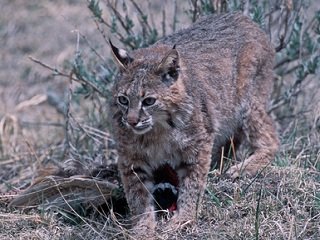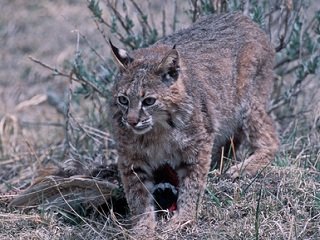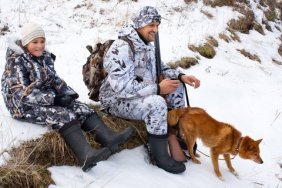 With the high costs of big game hunting, predator hunting is becoming more and more popular. However, most predator hunting is done targeting coyotes and foxes with bobcats mostly taken incidentally, but specifically targeting bobcats can be a fun challenge if a hunter is willing to tweak his/her routine. Here are some tips for targeting those sneaky felines.
With the high costs of big game hunting, predator hunting is becoming more and more popular. However, most predator hunting is done targeting coyotes and foxes with bobcats mostly taken incidentally, but specifically targeting bobcats can be a fun challenge if a hunter is willing to tweak his/her routine. Here are some tips for targeting those sneaky felines.
Unlike coyotes, the most important starting point for targeting bobcats is to make sure you are in an area that holds bobcats. A lot of places don’t have cats, so a quick scouting trip will be needed. Walk any dry or wet creek bed and look for tracks. If the terrain offers some ledges or small cliffs, try to check out any dirt spots at the base of steep rocky walls. Bobcats cannot resist stepping in bare dirt spots, as they use them for marking territory and for toilet reasons, so always be on the lookout for the small twisting scat of bobcats which come in little 2-3 inch packages resembling a sausage.
Once you get good at scouting for cats, you will be able to dial down the scouting and you will begin to just recognize good cat country.
Unlike coyotes and foxes, bobcats don’t like to cover a bunch of country and they will not come in on a dead run from hundreds of yards away. You will need to move in close to heavy cover and this means you will need to be more focused to detect small, slow movements on a smaller area than you are used to if you hunt the canines.
Cats love to stalk. Even if they know where a screaming meal is located, they will still get in a little stalking before showing up on scene. They cannot help it. Remember, cats like to torture small animals and let them go while pretending not to know where they went. Of course they know, but they cannot help being cats, so your mission is to coax a cat to the edge of heavy cover, not call blast him into an excited frenzy that will send him running.
Cats need some finesse, but since you will be located somewhat close to them while calling, you will need some good camouflage. Bobcats hardly ever expose themselves completely, but rather, they will peak at you from a strategic location. This is when noticing those slight movements will come in handy.








